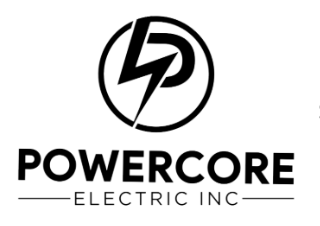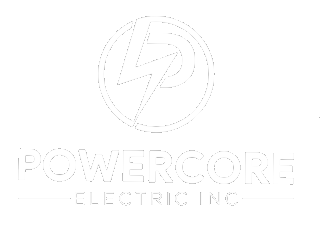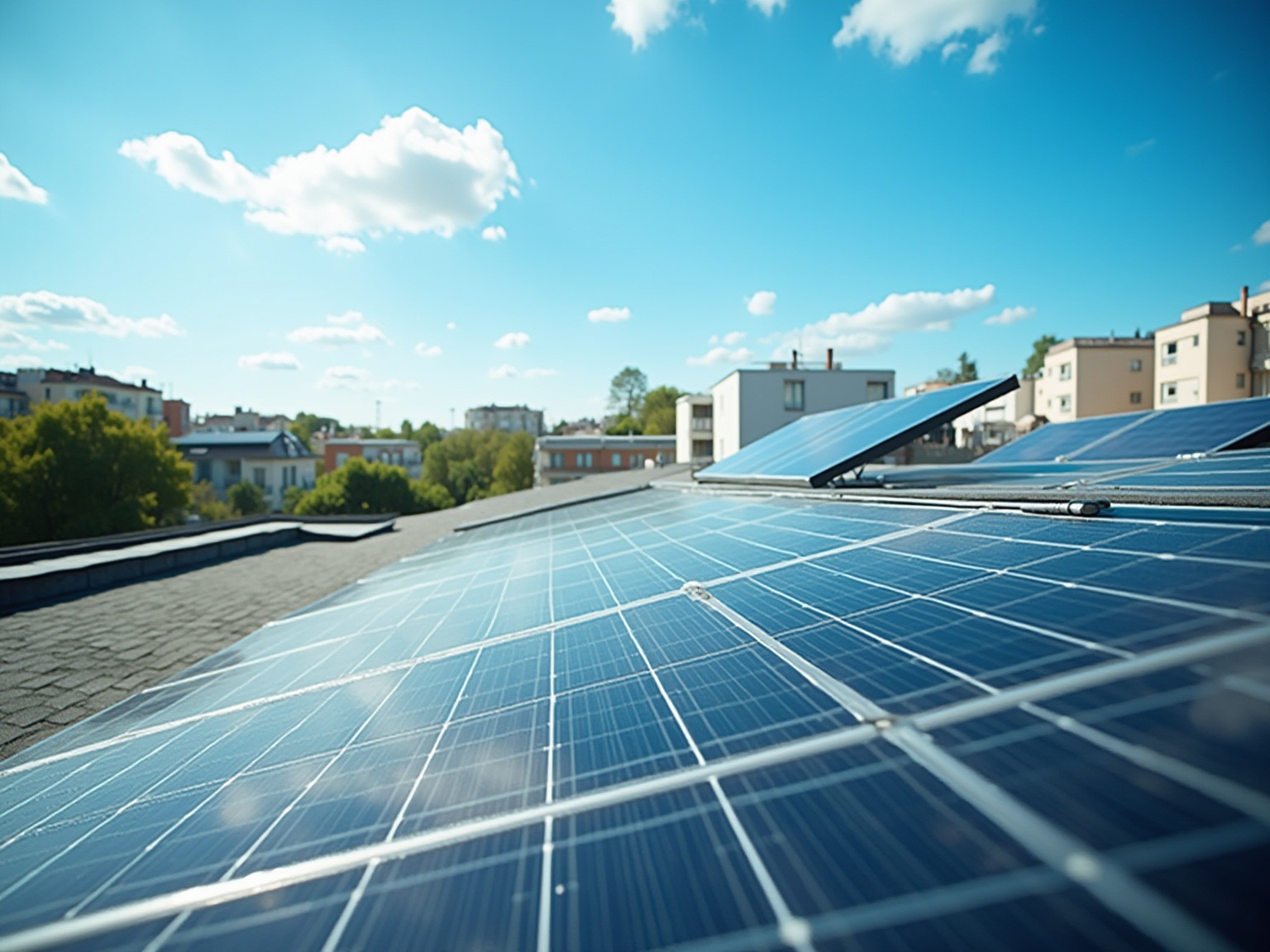Overview
The average monthly cost of solar panels typically ranges from $3 to $4 per watt, with total installation costs in California between $15,000 and $25,000 before incentives. This overview is supported by the article’s emphasis on factors influencing costs, such as system size, local electricity rates, and available financial incentives, which collectively demonstrate how homeowners can achieve significant long-term savings through solar energy adoption.
Introduction
As homeowners increasingly seek sustainable energy solutions, the transition to solar power has become a hot topic of discussion. Understanding the costs, savings, and environmental benefits associated with solar panels is essential for anyone considering this eco-friendly option.
With average installation costs in California ranging from $15,000 to $25,000, potential savings on electricity bills, and a variety of financing options available, navigating the solar landscape can feel overwhelming.
However, by exploring key factors such as:
- System size
- Local electricity rates
- Available incentives
homeowners can make informed decisions that not only benefit their wallets but also contribute positively to the planet.
This article delves into the intricacies of solar energy, providing insights that empower homeowners to embrace a greener future.
Average Costs of Solar Panels: What to Expect
When considering a transition to renewable energy, understanding the average monthly cost of solar panels is essential, especially for eco-conscious homeowners. In California, the average monthly cost of solar panels for residential photovoltaic systems typically translates to a total cost ranging from $15,000 to $25,000 before any incentives or tax credits are applied. This price range can vary depending on several factors, including:
- The size of your energy system
- The specific types of panels you choose
- The complexity of the installation process
On average, homeowners can expect the average monthly cost of solar panels to be about $3 to $4 per watt for these systems, and the good news is that many installers offer financing options to help alleviate the initial financial burden. If you’re planning to make the switch soon, remember that the federal renewable energy tax credit allows you to deduct 26% of your installation costs, providing a significant financial incentive that is available through the end of 2022. As Emily Walker emphasizes, over 224,000 California homeowners have turned to EnergySage to receive and compare quotes for photovoltaic installations, underscoring the importance of shopping around to maximize your savings.
Moreover, with electricity rates potentially soaring to 65 cents per kilowatt-hour in the evening, transitioning to this energy source can lead to impressive long-term savings. In fact, homeowners who transition to renewable energy can significantly reduce their average monthly cost of solar panels by saving 30-40% on their electricity bills compared to those who continue relying on traditional electricity sources. Homeowners can also take advantage of resources like:
- Calculators for sunlight energy
- Energy rebates
- Comprehensive home energy guides
Additionally, the case study titled ‘How to Save Money on Solar Panels in California’ highlights that homeowners who leveraged financial incentives and obtained multiple quotes saved an average of $5,000 on installation costs, reinforcing the importance of thorough research and comparison. This demonstrates not only the financial advantages of transitioning to renewable sources but also the possibility for considerable reductions in the long term.
Factors Affecting Monthly Savings with Solar Panels
When evaluating photovoltaic panels for your residence, several important elements can greatly affect the average monthly cost of solar panels. Here’s a closer look at what to keep in mind:
-
Scale: The dimensions of your solar setup play a crucial role in your power generation.
Bigger setups generally produce more electricity, leading to increased savings on your utility bills. Take the time to assess your household’s energy needs to determine the optimal system size for your situation.
-
Electricity Rates: One of the most impactful considerations is your local electricity rates.
In California, where families spend an average of over $1,700 on electricity annually, and where energy costs have risen by approximately 32% in the last ten years, renewable energy can be a game-changer. The higher your rates, the more significant your benefits with solar are likely to be.
Net Metering: Net metering enables you to sell any surplus power your setup generates back to the grid, which can further reduce your expenses.
It’s vital to understand your utility’s net metering policy, as this can enhance your overall savings. As noted by energy economists, net metering can drastically enhance the economics of panel systems, making them even more appealing.
Incentives and Rebates: Don’t overlook the various local and state incentives available, such as California’s Solar Incentive Program and the Federal Investment Tax Credit (ITC), which can make renewable energy more accessible.
These can dramatically reduce your upfront costs. By utilizing these financial advantages, you can enhance your overall savings when switching to renewable energy. Additionally, homeowners in California can explore various financing options for panel systems, such as cash purchases, loans, and leases or power purchase agreements (PPAs), each with different implications for ownership and long-term savings.
-
Understanding Solar Panel Functionality: Solar panels convert sunlight into electricity, which can then be used to power your home.
Understanding the various kinds of solar panels, like monocrystalline and polycrystalline, can assist you in selecting the best option for your power requirements. Moreover, selecting the right inverter is crucial for optimizing power conversion.
-
Optimal Battery Choices: For homeowners contemplating storage solutions, selecting the appropriate battery system is crucial.
Lithium-ion batteries are favored for their efficiency and longevity, enabling you to store surplus power generated during the day for use at night or during blackouts. Lastly, consider implementing efficiency measures in your home.
Decreasing your total power usage not only reduces your expenses but also enhances the advantages of your photovoltaic setup. Integrating passive thermal heating strategies can also improve your home’s resource efficiency.
By considering these elements, you’ll gain a better understanding of the average monthly cost of solar panels and your possible benefits. As homeowners in California have discovered, the shift to renewable energy can lead to significant financial advantages, with residential energy systems saving homeowners tens of thousands of dollars within twenty years of installation, and many families saving thousands over the lifespan of their systems. Comprehending panel functionality and optimal battery options for energy storage further enhances your investment in eco-friendly energy solutions.
Understanding Solar Financing Options
When it comes to funding panel installations, homeowners in California have a variety of tailored options to choose from, each with its own benefits and considerations, including the average monthly cost of solar panels. At Powercore Electric, we understand your needs and are committed to delivering the best-priced solar solutions while guiding you through this process:
- Photovoltaic Loans: Crafted specifically for panel installation, these personal loans enable you to distribute the expense over time, typically at a fixed interest rate. This means you can invest in renewable energy without the stress of a large upfront payment by focusing on the average monthly cost of solar panels. Notably, up to 36% of U.S. residential buildings are projected to be solar-powered by 2050, showcasing the growing trend towards sustainable energy solutions.
- Leases: With a rental agreement for renewable energy, you essentially rent the energy solution, paying a monthly fee to utilize it without possessing it. While this option often requires little to no upfront cost, it’s important to be aware that your savings might be lower compared to possessing the equipment outright. As the CFPB warns, there can be risks involved: “PREDATORY LENDING, PREDATORY SALES, AND ELDER ABUSE: 30% TAX CREDIT FORCED UPON ME BY BOTH THE SELLER AND THE LENDER WITHOUT MY FULL UNDERSTANDING.” This underscores the need for careful consideration of your financing options, especially regarding the average monthly cost of solar panels.
- Power Purchase Agreements (PPAs): Comparable to leases, PPAs enable you to pay for the power produced by the photovoltaic setup at a predetermined rate, usually lower than local utility charges. This is a great way to save on electricity costs without the commitment of ownership.
- Cash Purchase: If you’re able to, buying the energy system outright can be the most economical choice over time—especially when factoring in tax credits and incentives. This option can lead to significant long-term savings on your energy bills.
- Incentives and Grants: Don’t forget to explore local and state programs that offer grants or incentives to help reduce the overall installation cost. These financial aids can considerably ease the burden of transitioning to renewable energy and make your investment even more attractive.
As the energy market evolves, staying informed about the latest financing options and trends is crucial. For instance, recent developments have observed a shift in energy loans and leasing options, reflecting current homeowner needs. However, it’s essential to consider market pressures, as evidenced by a 4% decline in residential renewable energy installations in Q3 2024, largely influenced by the average monthly cost of solar panels, high electricity bills, and changes in net metering rules in California.
Grasping these options can enable you to make the best financial choice for your energy journey. Additionally, for Long Beach renters, exploring specific renewable energy solutions can unlock eco-friendly energy options tailored to your living situation.
Calculating Return on Investment (ROI)
Determining the return on investment (ROI) for your photovoltaic setup can appear overwhelming, but with a few simple steps, you’ll be well on your path to grasping your potential savings and the wider advantages of adopting renewable energy. Here’s how you can break it down:
-
Determine Your Total Investment: Start by considering all costs associated with your panel installation, including the average monthly cost of solar panels, installation fees, financing costs, and maintenance expenditures over the expected lifespan of your system.
Remember, many government programs are available to help you offset these costs, like local incentives and rebates that promote renewable resource adoption in your area.
-
Estimate Annual Savings: Take a close look at your electricity bills. By examining your consumption, you can calculate how much you will save each year after switching to renewable energy.
In many cases, homeowners have reported significant reductions in their monthly electric charges, and some have even eliminated them entirely. With the average solar array size across several states being 15.2 kW, many homeowners can anticipate significant reductions in costs while also improving their energy autonomy and contributing to a more sustainable future.
-
Calculate Payback Period: To determine how long it will take to recover your initial investment, simply divide your total investment by the anticipated yearly benefits.
This ‘payback period’ can give you a clear picture of when you can expect to start seeing a return on your investment.
-
Consider Long-Term Accumulation: Multiply your annual contributions by the number of years your system is expected to last—typically around 25 to 30 years. This will give you an approximation of the average monthly cost of solar panels and your total savings over time, which can be quite impressive!
Additionally, many homeowners find fulfillment in participating in the clean power initiative, aligning their lifestyles with environmentally friendly practices.
-
Assess Incentives: Don’t forget to consider any available tax credits or rebates. Government initiatives such as the Biden-Harris administration’s $7 billion Solar for All program enhance access to renewable power, ensuring that the advantages of photovoltaic technology are fairly shared among various communities.
These incentives can significantly lower your initial costs, thereby improving your overall ROI.
-
Participate in Government Initiatives: To apply for government renewable programs, visit your local administration’s resource office website or reach out to them directly. They can provide you with specific information on available incentives and the application process.
Ensure to collect all required documentation, such as proof of income and utility usage, to streamline your application.
-
Understand Solar Panel Functionality: Solar panels work by converting sunlight into electricity through photovoltaic cells. When sunlight hits these cells, it creates an electric field that generates direct current (DC) electricity.
This electricity is then converted into alternating current (AC) by an inverter, making it usable for your home. Comprehending this process can assist you in valuing the efficiency and cost-effectiveness of your energy investment.
By following these steps, you can gain a clearer understanding of your energy investment and make a more informed decision. As Emily Walker aptly states,
We’re discussing upwards of $100,000 over 25 years in some instances,
emphasizing the possible long-term financial advantages of renewable sources. Furthermore, with renewable power becoming more economical—shown by the usual construction expenses of photovoltaic farms varying from $0.89 to $1.01 per watt—it’s an exhilarating moment to consider this investment for your home.
The Environmental Impact of Solar Energy
Transitioning to solar power comes with a host of environmental benefits that not only enhance our planet’s health but also support local communities. Here are some key advantages:
-
Reduction in Carbon Footprint: Solar power stands out as a clean, renewable resource, significantly lowering greenhouse gas emissions typically associated with fossil fuels.
By harnessing the sun’s power, we can collectively reduce our carbon footprints and combat climate change. For instance, a household in Southern California experienced an impressive reduction in their utility expenses, over 70%, after installing a water heating system paired with a heat exchanger. This setup not only provided significant savings but also contributed to their sustainability efforts by reducing their carbon footprint.
With over 1 million electric vehicles (EVs) currently in use in the United States, the shift to renewable power sources like solar is essential for further decreasing our dependence on fossil fuels and minimizing carbon emissions.
-
Sustainable Power Source: Solar power is both abundant and sustainable, allowing us to rely less on finite resources like coal and natural gas. This shift helps promote independence in power and a more resilient future for resources.
Significantly, heating and cooling (SHC) technologies can satisfy approximately 80% of power requirements in both commercial and residential structures, demonstrating practical effectiveness.
-
Reduce Air Pollution: By decreasing our reliance on conventional fossil fuels, renewable power plays a crucial part in fostering cleaner air. This transition not only benefits the environment but also lowers health risks linked to air pollution, making our communities healthier places to live.
-
Job Creation: The renewable energy sector is booming, generating numerous job opportunities in areas such as manufacturing, installation, and maintenance. This growth not only bolsters local economies but also aids in developing a workforce proficient in renewable technologies.
-
Power Resilience: For homeowners, photovoltaic panels provide a route to autonomy in power.
They lessen vulnerability to power outages and fluctuations in prices, providing peace of mind and a more stable future. Furthermore, sunlight-powered air heaters can reduce a household’s carbon emissions by 20 to 40 percent and diminish monthly utility costs by 30 percent, further highlighting the financial advantages of embracing this technology.
Furthermore, governmental photovoltaic programs can offer financial support and incentives for homeowners aiming to transition, making renewable power more attainable.
Integrating renewable power into our lives does more than merely reduce utility costs; it’s a significant move toward a healthier planet. The growing adoption of solar technologies could lead to further reductions in carbon footprints, building on the progress already made. As Susan Tierney aptly points out, renewable resources are not perfect.
No type of power is. This statement emphasizes the importance of recognizing the imperfections of renewable sources compared to fossil fuels. However, the benefits of solar energy far outweigh its imperfections, making it a crucial part of our collective effort to protect the environment and foster sustainable living.
Conclusion
Transitioning to solar energy is not just a smart financial decision; it’s a significant step towards a sustainable future. With installation costs in California ranging from $15,000 to $25,000, understanding the various financing options, such as solar loans, leases, and power purchase agreements, can help homeowners navigate their choices effectively. By taking advantage of incentives and rebates, many homeowners can reduce their upfront costs substantially, making solar power more accessible than ever.
Moreover, the potential for monthly savings on electricity bills is substantial, especially in an era of rising utility rates. Factors such as system size, local electricity rates, and net metering can greatly influence these savings. By assessing individual energy needs and leveraging available resources, homeowners can maximize their return on investment, often saving thousands over the lifespan of their solar systems.
Beyond the financial benefits, the environmental impact of switching to solar energy is profound. Reducing reliance on fossil fuels not only lowers carbon emissions but also contributes to cleaner air and a healthier community. As the solar industry continues to grow, it also creates jobs and fosters energy independence, enhancing local economies and promoting a resilient energy future.
In conclusion, embracing solar energy is a powerful way for homeowners to save money while making a positive impact on the planet. With the right information and resources, the transition to solar can be both an economically sound and environmentally responsible choice, paving the way for a greener tomorrow.


